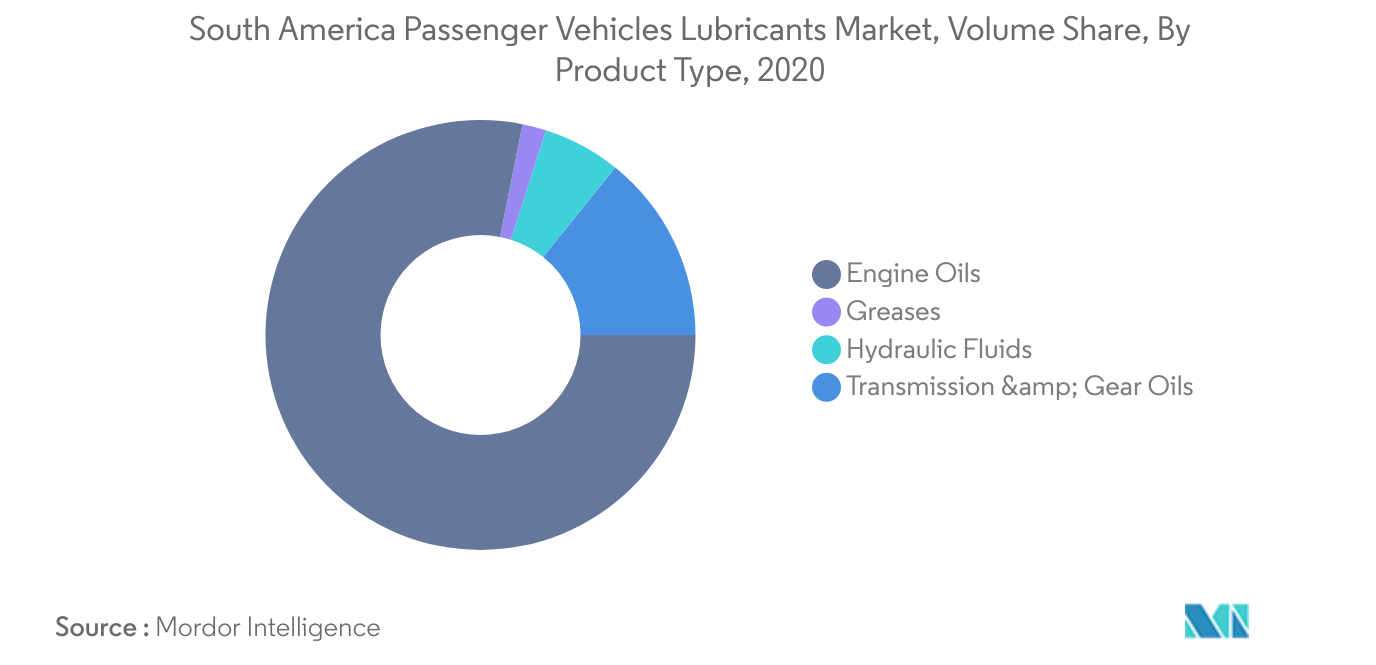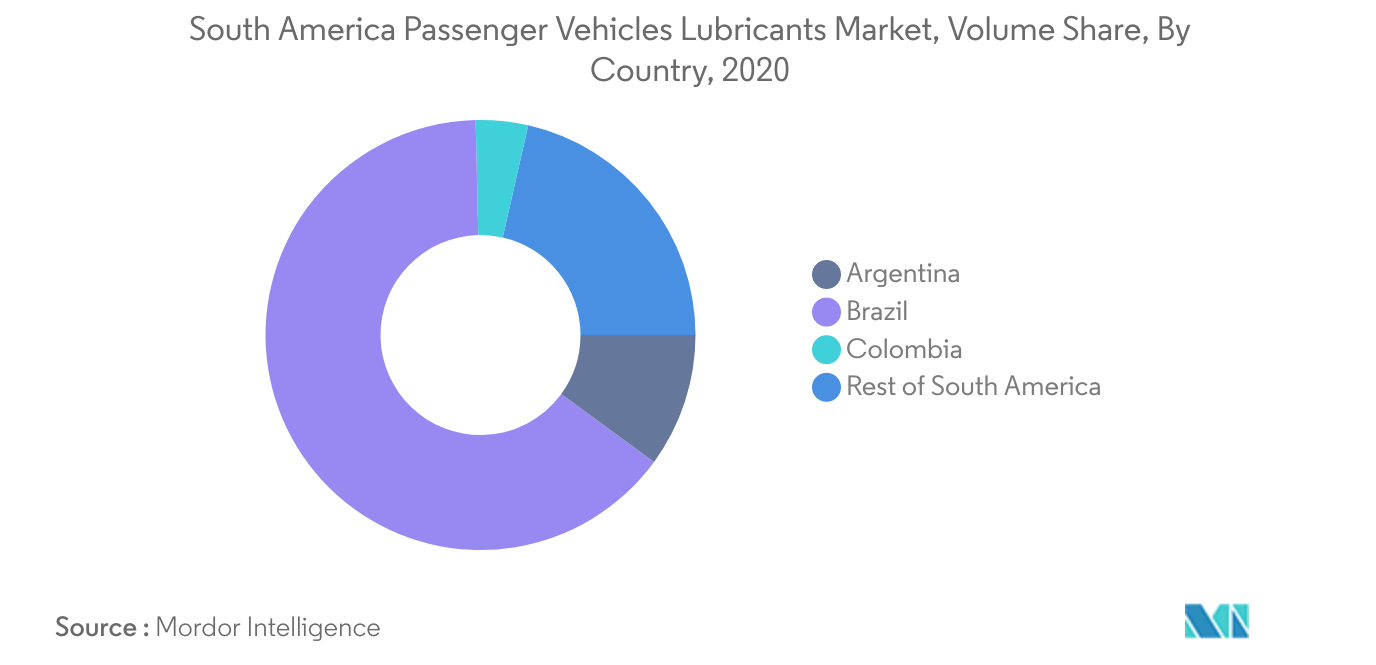Market Trends of South America Passenger Vehicles Lubricants Industry
This section covers the major market trends shaping the South America Passenger Vehicles Lubricants Market according to our research experts:
Largest Segment By Product Type : <span style="font-family: 'regular_bold';color:#0e7db3;">Engine Oils</span>
- During 2015-2019, lubricant consumption in the South American passenger vehicle (PV) sector increased at a CAGR of 1.36%. Engine oil was the dominating lubricant product type in this sector, which accounted for a share of nearly 78% in lubricant consumption of this sector in 2020. Engine oil is followed by transmission oils, which accounted for 14.2% of the lubricant consumption in 2020.
- In 2020, post the COVID-19 outbreak, the usage of passenger cars significantly dropped due to the restrictions put in place as a response to the pandemic. As a result, automotive lubricant consumption in this sector fell by nearly 9.53%, in comparison to 2019.
- The expected recovery in production and sales of new passenger vehicles is likely to drive the lubricant consumption in this sector. As a result, PV lubricant consumption is likely to register a CAGR of 2.58% during 2021-2026.

Largest Country : <span style="font-family: 'regular_bold';color:#0e7db3;">Brazil</span>
- In the South American region, passenger vehicle (PV) lubricant consumption is the highest in Brazil, followed by Argentina and Colombia. In 2020, Brazil accounted for 64.6% of the total PV lubricant consumption in the region, whereas Argentina and Colombia accounted for a share of 10% and 3.9%, respectively.
- In 2020, the reduced usage of the passenger vehicle fleet after the COVID-19 outbreak negatively affected the PV lubricant consumption across the region. Argentina was the most affected as it witnessed a 15.08% drop in consumption during 2019-2020, followed by Colombia, which witnessed an 11.6% drop.
- During 2021-2026, Colombia is likely to be the fastest-growing PV lubricant market, as the consumption is likely to register a CAGR of 4.73%, followed by Brazil and Argentina, which are expected to witness a CAGR of 3.25% and 2.43%, respectively.


